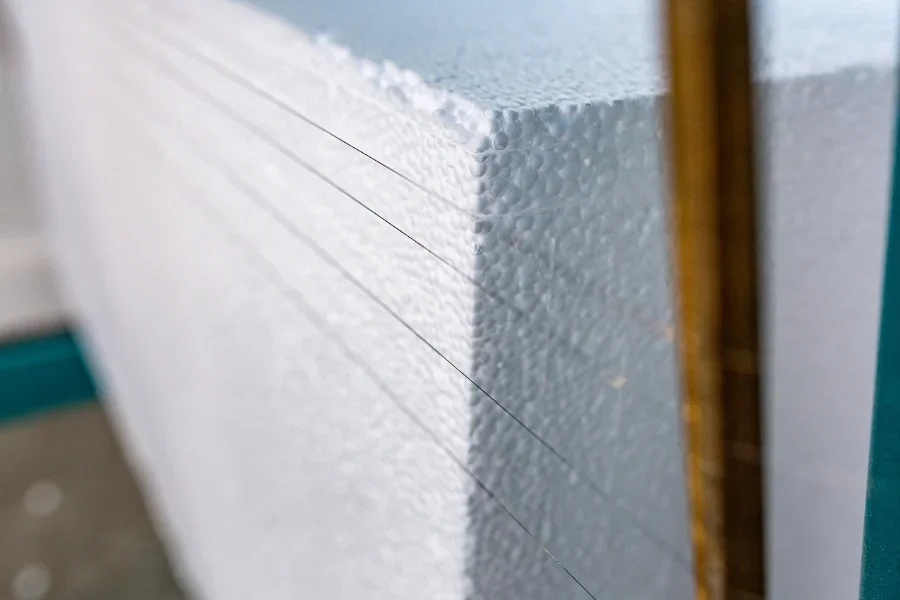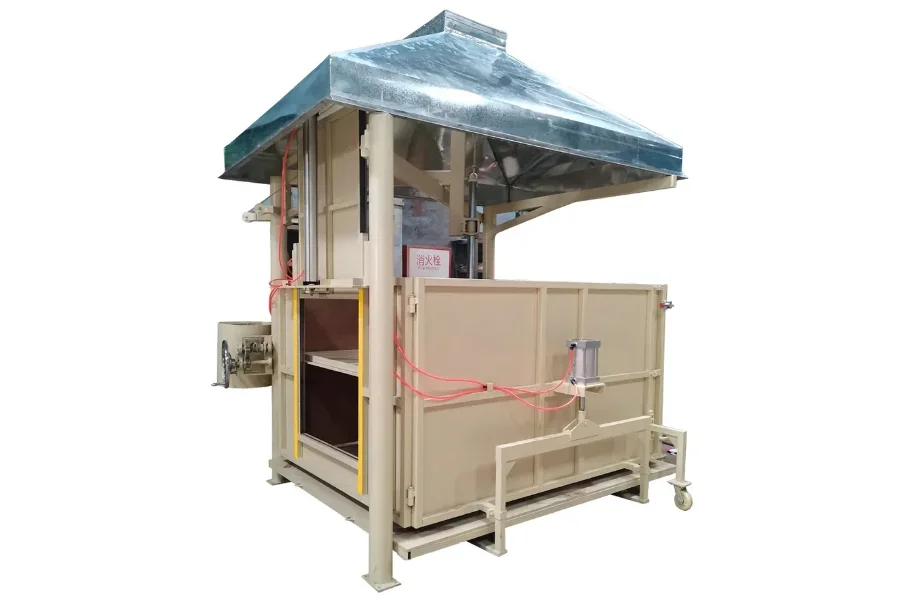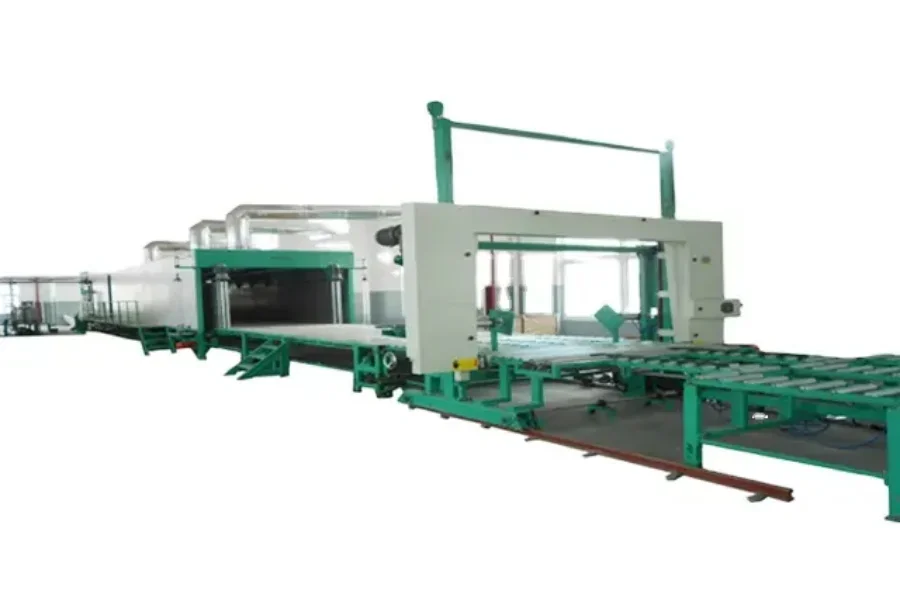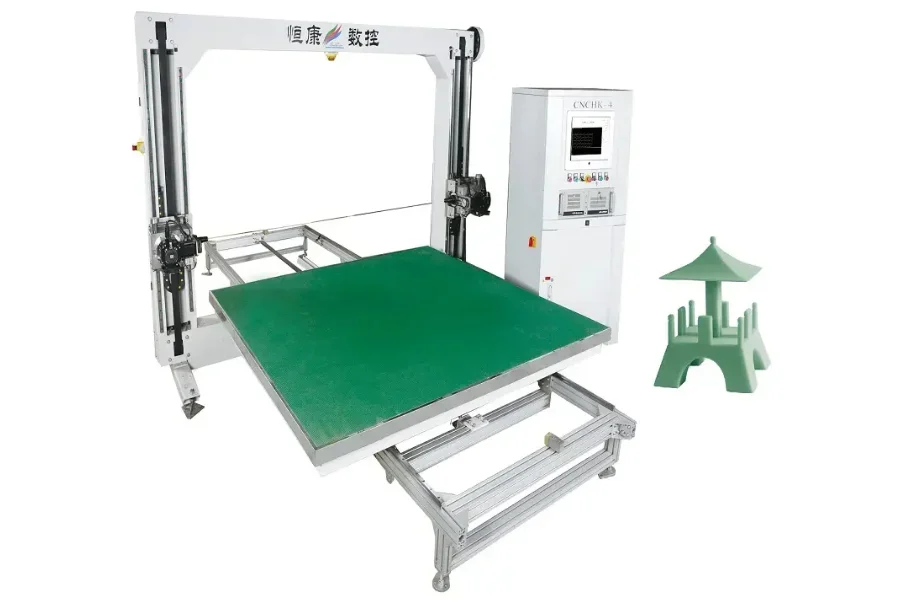Foam machines are used industrially in the transformation of liquid into foam. Foam materials are widely used in various industries for packaging, adhesives, protective coatings, and insulation.
When choosing the right foam machine for a specific industry, businesses may find it hard to navigate the many options available on the market.
This article will discuss how to choose foam machines without any hassle. It will also cover the different types of foaming machines and their pros and cons to assist buyers to purchase an ideal machine for their production needs.
Table of Contents
Global market overview of foam machines
6 tips for selecting foam machines
Types of foam machines
Conclusion
Global market overview of foam machines
The global market of foam-making machines is projected to reach a US$ 1.5 billion valuation, growing at a compound annual growth rate (CAGR) of 5% from 2023 to 2030. The causes for a rise in the huge market size are driven by the need for foam-making equipment across electrical and electronics, material handling, and other sectors.
Consumers’ demand for foam plastics is also a driver of the rising foam machine market. With these upward trends, manufacturers can expect huge demand for foam machines from retailers and consumers.
6 tips for selecting foam machines
Max molding size
Before buying a foam machine, businesses should note what size of mold the machines can make. Knowing what maximum molding size a foam machine makes involves business conducting extensive research about the available machine specifications.
They should look at the machine’s specs and ascertain the dimensions of the blocks of foam the foam machine can produce. Different consumers may want huge blocks of foam materials, while others may require smaller amounts.
Therefore it is crucial to stock foam machines that can produce small to large foam materials. Stocking foam machines with different molding sizes will allow customers to choose which design suits the size of foam they want to make.
Total output
Buyers must note the foam machine’s total output capacity as they shop for their customers. Different foam machines are built to handle different capacities of foam.
For instance, the amount of foam material needed for foam insulation in the building and construction industry may not be the same amount of foam needed in the electrical and electronics industry.
The foam output from a machine for the building and construction sector is relatively higher than that from the electronic and electronics sector. As a result, businesses should include foam machines for sale that handle varying foam output capacities to suit different industrial applications.
Foaming density
The foaming density capacity of a foaming machine is also essential when buying what type for a business. The foam density measures the quantity of polyurethane pounds the foam handles in every cubic foot volume. By looking at the foaming density, it tells how strong the foam from the machine is.
Foam density is crucial for the final consumer’s needs in different industries. For instance, a mattress manufacturer producing foam for low-density sleeping mattresses will require a 1-pound-per-cubic feet-rated machine. High-density foam mattress producers will use a machine that produces at least 5 pounds per cubic foot of foam.
Businesses should therefore keep in mind that customers have different foaming density needs and stock the right machines appropriately.
Machine size
Checking the foaming machine’s size is essential for any customer looking for the best investment. Foam machines come in different sizes. There are large foam machines that are installed inside a factory, while other machines are small.
Manufacturers producing foam in large-scale numbers will use larger machines than small-scale foam producers.
Businesses should have massive foam machines available if they have consumers that are large-scale foam producers. On the other hand, businesses should stock small-size foam machines capable of producing enough foam for small-scale producers.
Maintenance and repair
The ease of maintenance and repair is vital for businesses selecting foam machines for sale. Since foam manufacturers will use the machines extensively to meet consumers’ high demand, they may be subject to wear and tear. Upon breaking down, the machines should be repairable without halting production for an extended time.
Therefore, businesses must buy machines with spare parts available to replace worn-out parts. Also, the machines should not be too costly for the consumer to maintain otherwise they may not be worth the investment.
Type of foam

Businesses must note the type of foam the machine produces while choosing the most suitable design. Some foam machines are designed to produce large bubbles that last a short time. Other machines are designed to produce larger long-lasting foam bubbles.
To suit the consumer’s long-term needs, acquiring a foam machine that makes large bubbles is crucial. For clients who prefer small foam bubbles, businesses can appropriately acquire them for their needs.
Types of foam machines
Batch foam machine

A batch foam machine is an automated device that produces foam blocks one at a time. It operates by mixing chemicals, such as polyol and catalysts, in a mixing vessel, allowing the reaction to occur. The machine can produce between 30 to 40 blocks in an 8-hour cycle.
Pros
- It has adjustable systems so that users can make different sizes of molds.
- The machine is movable.
- They consume low energy.
- Automation saves manufacturers on manual labor costs.
Cons
- Because it is automated, it requires regular maintenance schedules.
Continuous foaming machine
A continuous foaming machine is a foam manufacturing machine that produces foam for various applications. They can produce foam for packaging, insulation, automotive parts, mattresses, and more.

The machine consists of an extrusion machine, foam pump, and foam generator. The foam generator is the core component of the machine, which creates foam from liquid materials. It passes the liquid material through an extrusion screw forced through a heated die. The resulting foam is pumped to a designated area through a pipe or hose.
Pros
- They are used in a wide range of foam manufacturing purposes.
- They can produce lighter-weight and more heat-resistant products than traditional foaming methods.
- They suit the production of foam in bulk.
- They allow precise control over the quality, faster processing times, and improved quality consistency.
- They save on costs while manufacturers make high-quality products.
Cons
- The machine consumes a lot of power.
- They require skilled experts to operate the machines.
- Cleaning and setting up takes time.
- They are bulky and require a lot of space.
Foam cutting machines
Foam-cutting machines are used for cutting foam materials into various shapes and sizes. They use a heated blade driven by either an electric motor or pneumatic power. The blade is usually made from an alloy such as stainless steel, which is extremely durable and ensures a clean, precise cut.

When heated, the blade melts the foam, allowing it to cut easily and accurately. Depending on the type of machine, the blade can be adjusted for different cutting speeds and depths. The machines can be used for various applications, from commercial manufacturing to home DIY projects.
Foam-cutting machines provide an efficient and cost-effective solution for cutting the foam into virtually any shape.
Pros
- They cut foam material with high accuracy and precision.
- The cutting process is fast, producing more foam within a short time frame.
- The machines are cost-effective as they can be used for multiple projects with minimal additional costs.
- They are versatile as they allow various cuts and shapes to be produced.
Cons
- They can be time-consuming when making intricate cuts
- They require a lot of setup and alignment before use.
Conclusion
Businesses looking for foam machines, whether as machine suppliers or to produce their own industrial foam, can follow these insights to find the right machine that suits their specific needs. To learn more and browse listings of foam machines, head to Alibaba.com.



